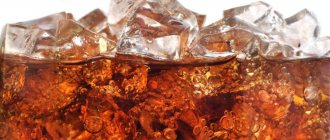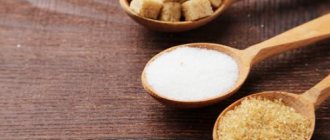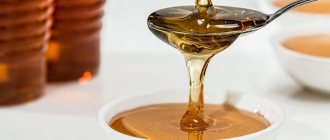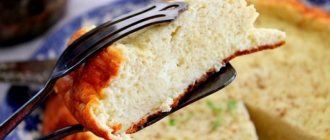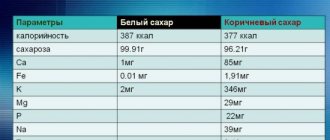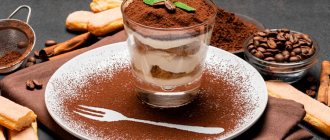Important!
The fruit, along with some saturated fats (almond butter, nuts), can lower blood sugar. An overripe banana almost always increases blood sugar. Green fruit in small quantities does not allow glucose to go beyond the normal range due to the presence of resistant starches. But doctors still do not recommend getting carried away with green bananas. If desired, it is better to limit yourself to small fruits. Mostly they contain up to 23 g of carbohydrates. As for large fruits, they contain 35 g of carbohydrates.
The amount of banana that a diabetic is allowed to consume per day depends on: the complexity of the disease, its type; individual characteristics of the body; human activity.
If the patient is sensitive to substances contained in bananas, then it is better to completely exclude them from the diet. In other cases, it is important for a diabetic to know exactly how the fruit affects his body. This will help manage insulin levels and monitor medications. Statistics show that you can eat a sweet product once a day without harm. In this case, the fruit should be small in size.
The benefits and harms of bananas for diabetics
For people with diabetes, it is very important to maintain a feeling of fullness after eating without unnecessary stress on the endocrine system. Banana copes well with this problem. However, uncontrolled consumption of the fruit can lead to a worsening of the disease. Normally, it stimulates the activity of the nervous system and normalizes blood pressure. Pectins have a positive effect on the growth of beneficial microorganisms involved in food digestion.
Eating the fruit also improves: skin condition; brain functioning; activity of the musculoskeletal system.
The main disadvantage of a banana is the sugar content that exceeds the norm in a ripe fruit, and the cholesterol content in green fruit. If a diabetic has concomitant diseases, such as irritable bowel syndrome, food allergies, the fruit will lead to a worsening of the condition.
Regular consumption of bananas may increase blood viscosity, which leads to a deterioration in blood flow in the system. This can pose a great danger to the patient. It is strictly prohibited to consume industrial bananas. After all, they are treated with carcinogenic substances that can cause damage to health. A high-quality product in an acceptable quantity will only contribute to the normal functioning of all body systems.
People who are familiar with diabetes first-hand need to constantly monitor the sugar content in their foods to prevent further development of the disease. The same applies to those who are on diets. Even some fresh fruits, which can be very useful for others, are contraindicated for them.
Use for diabetes
Many sources advise eliminating bananas from your diet completely. Indeed, they have a fairly high glycemic index - 60 units. They are also high in calories, with 96 kcal per 100 grams. These are not very attractive indicators for a diabetic patient. But not everything is so sad.
By the way, we recommend reading the article Dates for diabetes
If a diabetic has a stable and not severe course of the disease, there are no complications, then you can include a banana in your diet. But you need to follow some recommendations:
- The maximum allowable amount is one fruit per day, and two fruits per week.
- You cannot eat the whole fruit; it is better to divide it into five doses. Otherwise, there will be a sharp jump in blood glucose levels, and this is unacceptable for diabetes.
- It is not advisable to eat the fruit on an empty stomach; it would be better to eat it as a snack between main meals.
- This fruit can be cooked, baked or boiled, which will lower its glycemic index.
- It is prohibited to eat other foods with a high glycemic index on the same day that a banana was consumed.
- People with diabetes should not eat overripe fruits, as they contain too much sugar.
- It is necessary to measure your sugar level with a glucometer after eating a banana. This will help determine how the body reacted to this fruit.
Remember that before introducing any product into the diet of a diabetic patient, you must consult an endocrinologist and undergo the necessary tests. Only a doctor can make a balanced and correct decision whether a particular person can eat bananas if they have diabetes.
If banana can be consumed, it will help cope with many problems with this disease. The condition of the skin will improve and its ability to regenerate will increase. Thanks to this fruit, the heart muscle will be strengthened and cholesterol will be reduced. And the serotonin that is produced in the body will help fight depression and bad mood.
Why is sugar harmful?
Sugar is a fast carbohydrate. of this product is 70 units. That is, when you eat sugar, your blood glucose level rises very quickly. do not provide any benefit to the body. All people should limit their consumption, and some people need to completely eliminate sugar from their diet. A small amount of fast carbohydrates is allowed only for people experiencing intense physical activity, as they promote maximum fatty acid burning and effective weight loss.
“White death” is what doctors and nutritionists call sugar. It leads to the development of obesity and causes a number of diseases. Sugar negatively affects the functioning of the heart and interferes with blood circulation. Therefore, people who are at risk should eat exclusively unsweetened fruits. What's on their list?
Summarize
If you have diabetes, you can eat fruits such as bananas as part of a healthy diet.
If you like bananas, the following tips can help minimize their impact on your blood sugar:
- Watch your portion size . To reduce the amount of sugar you eat in one sitting, eat a smaller banana.
- Give preference to firm, almost ripe bananas . Eat bananas that are not too ripe so they have a little less sugar.
- Spread your fruit intake throughout the day . Spread your fruit intake throughout the day to reduce your glycemic load and keep your blood sugar levels stable.
- Eat them with other foods . Enjoy bananas with other foods, such as nuts or full-fat yogurt, to slow down the digestion and absorption of sugar.
If you have diabetes, remember that carbohydrate-containing foods can affect your blood sugar differently.
Therefore, you can monitor how eating bananas affects your blood sugar levels and adjust your eating habits accordingly.
What are unsweetened fruits? G. Shelton's list
The founder of the theory of separate nutrition, an American, paid special attention to the division of fruits into sweet and savory. He recommended that everyone start their day with a portion of fresh fruits, and not in the form of juices. You are allowed to eat 2-3 types of them at one time.
In his theory, G. Shelton identified unsweetened fruits as a separate group. The nutritionist's list suggests that it includes sour and semi-acidic fruits. In addition, there is another group consisting of sweet fruits.
Sour fruits include oranges and pineapples, unsweetened apples, peaches, grapefruits, lemon, sorrel, and cranberries. Their sugar content is minimal, which means they are among the healthiest fruits.
The group of semi-acidic fruits includes fresh figs, sweet cherries and apples, plums, mangoes, pears, sweet peaches, apricots, and blueberries. According to G. Shelton's theory, it is recommended to combine sour and semi-acidic fruits with each other.
Sweet fruits include bananas, dates, raisins, prunes, and persimmons. The consumption of such fruits should be kept to a minimum.
Today, many nutritionists disagree with G. Shelton and believe that the group that includes unsweetened fruits should be made even smaller. It should include only fruits with the lowest possible sugar level.
Quantitative sugar content in fruits: table
Depending on the quantitative sugar content in fruits, their list can be presented in the following table.
Sugar content in fruits
| Fruit name | Sugar content per 100 grams, g |
| Avocado | 0,66 |
| Lime | 1,69 |
| Lemon | 2,5 |
| 4,5 | |
| Grapefruit | 5,89 |
| Nectarine | 7,89 |
| Papaya | 5,9 |
| Apricot | 9,24 |
| Quince | 8,9 |
| A pineapple | 9,26 |
| Orange | 9,35 |
| Pear | 9,8 |
| Guava | 8,9 |
| Kiwi | 8,99 |
| Clementine | 9,2 |
| Kumquat | 9,36 |
| Mandarin | 10,58 |
| passion fruit | 11,2 |
| Peach | 8,39 |
| Plum | 9,92 |
| Apple | 10,39 |
| Bananas | 12,23 |
| Grape | 16,25 |
| Cherry | 11,5 |
| Pomegranate | 16,57 |
| Figs | 16,0 |
| Persimmon | 16,53 |
| Mango | 14,8 |
All the fruits presented in this table can be divided into 4 groups based on the amount of sugar they contain.
- Low sugar content - up to 3.99 g per 100 grams of fruit. The “record holder” in this group is avocado - an unsweetened fruit, which in terms of taste is sometimes classified as a vegetable.
- With a small amount of sugar - from 4 to 7.99 g per 100 grams. The winner in this group is the cherry plum. The average fruit contains up to 1 gram of sugar.
- With an average sugar content - from 8 to 11.99 per 100 grams. The most useful in this group is the peach.
- High in sugar. The consumption of these fruits should be limited to people with diabetes.
Bananas for diabetes
There is no clear opinion about whether bananas are allowed for diabetics. On the one hand, it is a storehouse of vitamins and minerals. On the other hand, 100 grams of fruit contains 12 grams of sugar. For patients with non-insulin-dependent diabetes, this is an argument to refrain from using it.
However, it may be helpful to keep in mind some ways to reduce the impact of food on your sugar levels:
- It is better to eat berries and fruits rich in carbohydrates at the same time as proteins and fats; this will slow down the breakdown of carbohydrates, and blood sugar will increase more gradually.
- exclude the combination of fruits with flour products, other berries and fruits.
Be that as it may, the final decision on including bananas in the diet should be made by the doctor for each patient, taking into account the severity of his disease.
The healthiest unsweetened fruits
All fruits that are low in sugar are already good for the body. But it should be borne in mind that only if they are used in moderation. What fruits are unsweetened and what are their benefits? For example, lemon is the record holder for the content of vitamin C, which is so necessary for the body’s immune system, especially during periods of increasing numbers of viral diseases. But there are also contraindications to its use: stomach ulcers, gastritis, hypertension.
Avocado is no less useful. Regular consumption of these fruits (half a day) improves memory, helps normalize intestinal function, get rid of constipation, and reduces blood pressure.
In terms of sugar content, avocado deservedly tops the list of unsweetened fruits. But you should not abuse it, since the fruits are very high in calories, due to the large amount of vegetable fat they contain.
Thus, absolutely all unsweetened fruits are healthy. They are recommended to be eaten before or after meals, and are better used as a snack. A single dose of fruit is 100-150 grams or 2-3 fruits.
Changes in sugar content
The sugar content of bananas changes as they ripen in a process controlled by a plant hormone known as ethylene. Green bananas are almost all starch and have low sugar content. As bananas ripen, the starch content decreases and sucrose appears. Then fructose and glucose appear. After approximately 28 days of ripening, sucrose begins to decline. The sugar content of overripe bananas can be significantly higher than that of bananas that are underripe and optimally ripe.
Bananas offer several health benefits, providing you with essential potassium, vitamin C, and vitamin A. They also contain fructose, a simple carbohydrate also called fruit sugar that occurs naturally in many fruits and vegetables, as well as honey. Like all carbohydrates, fructose provides four calories per gram, and bananas' fructose content makes them an easily digestible fruit.
What fruits are suitable for the diet?
People who are on a diet should eat foods that are lower in calories and low in sugar. Unsweetened fruits such as grapefruit, kiwi, pineapple, and apples will be beneficial for them. They speed up metabolism, promote the breakdown of fat deposits and saturate the body with essential vitamins and minerals.
When planning a diet, those losing weight are interested in how many calories are in a banana and whether it is possible to gain weight if you eat the fruit daily. Bananas are tasty, healthy and nutritious, and contain almost no fat. banana is a dietary product. However, the main component of the fruit is carbohydrates, so if the diet is planned incorrectly, you can eat bananas.
Banana is versatile in cooking. Oatmeal with a banana and half an apple for breakfast, cottage cheese with a banana for dinner, for dessert and chips if you really want something sweet - such a varied menu can be created from just one fruit. This diet will please any sweet tooth.
Bananas are also very beneficial for the body. The composition of the fruit contains many minerals and trace elements:
- Vitamin B3
or nicotinic acid is involved in the processes of cellular respiration, thanks to which proper metabolism of proteins and fats occurs. It regulates the amount in the body, preventing it from increasing. - Vitamin B5
or pantothenic acid is involved in carbohydrate metabolism. Improves microcirculation of blood vessels, produces histamine and hemoglobin. - Vitamin B6
or pyridoxine – is involved in the synthesis of serotonin and adrenaline. Its function is to maintain the skin, teeth and gums in a healthy condition. - Potassium
regulates the proper functioning of the nervous system. Positively affects the functioning of the heart and blood vessels of the brain. Normalizes blood pressure, reduces the risk of stroke. Deficiency of this element causes kidney failure, increases blood pressure, and the appearance of cellulite. - Magnesium
supports the rhythmic functioning of the heart. Reduces muscle tension and reduces blood clotting. Without it, calcium and potassium are not absorbed. - Sodium
fights swelling and has a diuretic effect. A large amount of it is found in unripe green fruits.
The composition of the fruit also includes dietary fiber, pectin, enzymes and tannins which. Daily consumption of fruit can reduce fatigue, increase performance and concentration.
Athletes, especially heavyweights, have a slightly different problem. Sometimes they need to gain weight to meet the standards. Therefore, bodybuilders use this product to gain muscle mass. Therefore, this is a favorite delicacy for athletes; they also have their own sports diet.
Dishes, vitamin cocktails, yogurt and bananas become part of the diet of people with diseases of the cardiovascular system and bronchopulmonary spasm.
Mini
Mini bananas are small fruits. They are the smallest and sweetest of all species. The average weight of a mini banana is 80 grams and their calorie content is 80 calories.
Dried
Dried banana chips are a common delicacy. Included in various nut mixtures, an additional component in muesli. 100 grams contain 300 calories. Quite a high-calorie, but at the same time healthy product.
Diet dishes
Regular and mini bananas have a distinct sweet taste, so those with a sweet tooth who are watching their figure will love it. They go well with cottage cheese, yogurt,... To maintain your figure in perfect condition, or if you want to lose a couple of extra pounds, you can replace one meal with several bananas.
There are many dietary recipes based on it. These include various vitamin cocktails, smoothies, juices and herbal teas. For example, 100 grams of banana juice contains 85 calories. Regular bread can be replaced with banana bread; its energy value is 320 calories per 100 grams.
Banana is the main component of mono diets. It is mixed with milk or kefir. The calorie content of such dishes does not exceed 150 calories.
Harmful candies and high-calorie sweets can be replaced with dried fruits, but they should be consumed in moderation. Banana chips contain almost three times more sugar and calories.
table
for banana dishes:
| Product or dish | Kcal per 100 grams of product |
| Medium sized fruit | 85 |
| Large fruit | 100 |
| Mini fruit | 80 |
| One kg of bananas | 8500-1000 |
| Overripe fruit | 117 |
| Dried fruit | 300 |
| Cottage cheese with banana | 190 |
| Oatmeal with banana | 62 |
| Banana milkshake | 120 |
| Banana smoothie | 154 |
| 59 | |
| Banana chips | Over 500 |
| Fried fruit | 205 |
| Banana yogurt | 136 |
| Banana cupcake | 225 |
| Salad with bananas and apples | 150 |
| Banana toast | 239 |
| Banana milk | 110 |
Benefits of fruit
Banana is a fairly high-calorie fruit, but this is not a reason to refuse it, because many useful qualities are hidden under the peel.
They contain a large amount of vitamins: retinol, ascorbic acid, thiamine, riboflavin, pantothenic acid, pyridoxine, tocopherol, vikasol and others.
This fruit also contains minerals: potassium, magnesium, iron, sodium, selenium, zinc, phosphorus and others.
The fruits are very rich in fiber. It improves intestinal motility, fights constipation and helps lower cholesterol.
They rarely cause allergies, so they are introduced into complementary foods for children in the first year of life. In addition, the fiber in this fruit is not coarse, so it does not damage the immature intestines of infants.
The fruits are very nutritious. They perfectly satisfy hunger and fill you with energy.
Contain substances that help increase serotonin in the body. This helps improve mood and reduce anxiety, because serotonin is the hormone of happiness.
This fruit contains a huge amount of potassium, which is good for the heart muscle. Also, with diarrhea and vomiting, when loss of electrolytes occurs, bananas will help restore ionic balance.
They contain a large amount of iron, so they are an excellent prevention of anemia.
Helps normalize blood pressure.
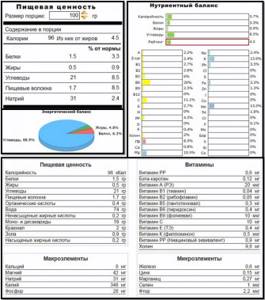
Nutritional value of banana
Bananas are useful for gastritis and stomach ulcers. This is achieved due to its enveloping properties and the ability to reduce the acidity of gastric juice.
These fruits contain substances that help normalize the hormonal levels of men and women.
They are rich in pectin, it binds and removes toxins from the intestines, fights tumors of the gastrointestinal tract.
When not to eat bananas
Regardless of how many calories are in a particular type of banana, in some cases you should not eat it at all:
- It is a sweet fruit and contains a large amount of sugar, so it should not be consumed by people suffering from diabetes.
- Overweight people are advised to exclude this product from their diet.
- Stale, poor quality and spoiled fruits can harm the liver.
- Bananas take a long time to digest, so you can eat them in small quantities.
- They are contraindicated for people with varicose veins and thrombophlebitis.
- The fruit thickens the blood, increasing the risk of thrombosis.
A banana does not contain many calories, so why do many people gain weight and gain weight by eating such a dietary fruit? It's all about the carbohydrates. When planning a diet, you need to take into account the carbohydrate base of the banana and adjust the rest of the diet so that the balance of proteins - fats - carbohydrates is not disturbed.
If you devote the bulk of your diet to banana dishes, then the rest of your diet should consist mainly of protein.
In this case, the fat component of the menu is given third place. For the diet to be effective, you need to organize your meals in accordance with, and also calculate how much protein, fat and carbohydrates should be on your plate every day.
Speaking about the caloric content of bananas, it is important to mention that despite the fairly high carbohydrate content in them, bananas have an average (30 units for a green fruit and 50-60 for a regular ripe one) - in other words, banana calories are absorbed by the body gradually, causing prolonged saturation. On average, one banana contains approximately 100-120 kcal.
As for the health benefits of bananas, they contain B vitamins (for example, one banana covers 27% of the daily value in vitamin B6), as well as natural antioxidants and a number of microminerals. However, the main benefit of bananas is that they can successfully act as a source of “correct” carbohydrates after strength training or as a snack.
Calorie content of different types of bananas
The actual calorie and carbohydrate content of bananas depends primarily on the variety and size of the particular fruit - small tropical bananas contain more sugars and calories per 100g than large and much less sweet industrial bananas. In addition, there are low-calorie varieties of green bananas intended for frying and cooking.
Calories in bananas
:
- A very small banana (less than 15 cm, 80 g) - 70 kilocalories.
- Small banana (15-18 cm, 100 g) - 90 kilocalories.
- A medium banana (18-20 cm, 120 g) - 105 kilocalories.
- Large banana (20-23 cm, 135 g) - 120 kcal.
- Very large banana (more than 23 cm, 150 g) - 135 kcal.
- Sliced bananas (1 cup, 150 g) - 135 kcal.
- Banana puree (1 cup, 225 g) - 200 kcal.
Among other things, the calorie content of bananas is also affected by what they are consumed with. For example, a fruit salad of bananas, oranges, apples and sweet yogurt will contain significantly more calories than a single banana. Also, such a fruit salad will contain a fairly large amount (that is, sugars).
Sugar in Bananas
An average banana contains 5.72 grams of fructose, according to the USDA National Nutrient Database. It also contains 5.88g glucose or 4.98g glucose per 100g banana, as well as smaller amounts of natural sugar sucrose and maltose. A large banana contains 6 grams of fructose, while a small banana contains 4.9 grams.
Your body quickly absorbs the glucose in bananas, but takes a little longer to absorb fructose and other sugars. This means that bananas provide quick, short-term energy.
Bananas: Health Benefits
As we mentioned above, one medium banana covers about 30% of the daily requirement of vitamin B6, important for metabolism, approximately 20% of the norm, about 16% of the daily requirement for manganese, 13% for potassium and 8% for potassium (1). In addition, depending on the variety and place of growth, bananas may contain some amount of copper, selenium and other trace minerals.
Bananas also contain antioxidants such as catechins and dopamine. However, despite the fact that dopamine is a precursor (building material) for, dopamine from a banana cannot enter the human brain. In other words, the common belief that bananas improve your mood and fight depression is nothing more than a beautiful myth.
Bananas: composition and calorie content
| Content per 100 g | Contents in one medium banana (130 g) | |||
| Quantity | % of daily value | Quantity | % of daily value | |
| Calorie content | 89 kcal | 4% | 120 kcal | 6% |
| Total fat | 0.3 g | 0% | 0.4 g | 0% |
| – saturated | 0.1 g | 0% | 0.13 g | 0% |
| – polyunsaturated | 0.1 g | 0.13 g | ||
| – monounsaturated | 0 g | 0 g | ||
| Total carbohydrates | 23 g | 7% | 31 g | 9% |
| - cellulose | 2.6 g | 10% | 3.5 g | 13% |
| - sugar | 12 g | 16 g | ||
| - starch | 4 g | 6 g | ||
| Total proteins | 1.1 g | 2% | 1.4 g | 2.5% |
| 64 IU | 1% | 86 IU | 1.3% | |
| Calcium | 5 mg | 0% | 7 mg | 0% |
| Vitamin D | – | 0% | – | 0% |
| Vitamin B 12 | – | 0% | – | 0% |
| 9 mg | 14% | 12 mg | 19% | |
| 0.3 mg | 1% | 0.4 mg | 1.3% | |
| Vitamin B 6 | 0.4 mg | 20% | 0.6 mg | 27% |
| 27 mg | 6% | 36 mg | 8% | |
| Potassium | 360 mg | 10% | 480 mg | 13% |
How many carbohydrates are in a banana?
It must be remembered that the calorie and carbohydrate content of bananas depends on their degree of ripeness. Since green bananas are transported from the place of growth to the place of sale in vacuum packaging and in refrigerators, they ripen on the spot. In fact, before they hit store shelves, bananas are first “brought back to life” in special gas installations.
This process of artificial ripening leads to the fact that the starch contained in the banana begins to gradually turn into sugar and other fast carbohydrates with a high glycemic index. This is why the sugar content of a banana can vary - the more ripe you eat a banana, the more sugar it will contain and the higher its GI will be.
Glycemic index of bananas
As is the case with the content of fast carbohydrates in a banana, which depends primarily on its variety and degree of ripeness, the glycemic index of bananas is not constant. Obviously, green bananas have a low glycemic index, while ripe bananas have a higher glycemic index. At the same time, heat treatment (baking) or grinding in a blender can also increase GI.
Separately, we note that any tables of the composition and calorie content of bananas are averaged - according to Russian GOSTs, the final content of substances in the product may differ by 20-25% from what is indicated on the packaging. The fact that it is physically impossible to examine each specific banana for the content of calories, microminerals and vitamins in it also plays a role.
Green (unripe) bananas contain resistant starch
The type of carbohydrates in a banana depends on its ripeness.
Green or unripe bananas contain less sugar and more resistant starch (,).
Resistant starch (resistant starch) are long chains of glucose (starch) that are “resistant” to digestion in the upper part of the digestive system ().
This means they act similarly to fiber and do not cause an increase in blood sugar.
They can also help feed friendly bacteria in the gut, which has been linked to improved metabolism and improved blood sugar control (, , , ).
In fact, a 2015 study on blood sugar regulation in women with type 2 diabetes found some interesting results. Those who took resistant starch supplements over an 8-week period had better blood sugar control than those who did not ().
Other studies have shown that resistant starch may have beneficial effects on people with type 2 diabetes. Benefits include increased insulin sensitivity and decreased inflammation (, , ,).
The role of resistant starch in type 1 diabetes is less clear.
The effect of a banana on blood sugar levels depends on its ripeness
Yellow or ripe bananas contain less resistant starch than green bananas and also contain more sugar, which is absorbed more quickly than starch.
This means that fully ripe bananas have a higher GI and cause blood sugar levels to rise faster than green or unripe bananas ().
Conclusion:
Green (unripe) bananas contain resistant starch, which does not raise blood sugar and may improve long-term blood sugar regulation. Yellow ripe bananas contain more sugar than green ones, so they may cause a greater rise in blood sugar.
Are bananas dietary?
We also note that due to the high content of fast carbohydrates, bananas are still not suitable for those who adhere to or - an average banana will be equated to a figure of 30-40% of the permissible daily sugars. Unfortunately, such diets actually prohibit the consumption of fruit, which is one of the main disadvantages of carbohydrate-free diets for health.
Harm of bananas
Speaking about the dangers of bananas, we must first of all note that their consumption is not recommended for people with irritable bowel syndrome, as they can aggravate the disease (2). However, according to Harvard Health Publications
, in some even healthy people, bananas can cause food allergies and.
In addition, in quite rare cases, regular consumption of bananas can increase blood viscosity, which, in turn, can reduce blood flow to certain parts of the body. This is primarily dangerous for people suffering from varicose veins, and can also negatively affect male potency (especially for older men).
***
The undeniable advantages of bananas include a high carbohydrate content, useful for closing the carbohydrate window after strength training for muscle growth, a relatively low glycemic index, as well as the presence of microminerals and antioxidants. The main disadvantages are the calorie content if consumed in excess. However, bananas definitely cannot be considered harmful to human health.
Scientific sources:
- Bananas, raw,
- Understanding and treating an irritable bowel,
- What's on my food: Bananas,
- Global Issues For Breakfast: The Banana Industry And Its Problems,
As we interact with people in our increasingly frantic and fast-paced lives, we often lose control of our consumption of needed and unnecessary foods. Sugar is vital to good health, without it all the cells in our body will stop functioning and die. However, eating too much sugar per day increases the risk of a number of diseases, including rotten teeth, obesity and type 2 diabetes.
These days, we are increasingly being warned to reduce our sugar intake. But often people don't even realize how much sugar may be in the foods they eat.
To help these people, we'll list some everyday foods and drinks along with the amount of sugar (in teaspoons) they contain.
What is sugar?
Sugar is a simple carbohydrate that belongs to a class of chemically related substances with a sweet taste. It comes in various forms. There are three main types of sugar - sucrose, lactose and fructose.
Even though our cells need sugar (glucose) to survive, consuming too much sugar can cause many different health problems. Sugar contains no beneficial nutrients and, in excess, only contributes to tooth decay, diabetes and obesity.
The American Heart Association (AHA) said, "Excessive sugar intake adds no nutrients and only empty calories, which can lead to extra pounds or even obesity, thereby worsening heart health."
Knowing how much sugar you've added yourself, and how much is already in the foods and drinks you consume, is vital to your health, especially today when many processed foods contain significant amounts of added sugar.
The American Heart Association (AHA) currently recommends that men consume no more than 150 calories of added sugar per day and women no more than 100 calories.
To help you keep track of how much sugar you consume, we'll list some everyday foods and drinks and the amount of sugar they already contain. Some of this data may surprise you.
How much sugar do chocolate and candies contain?
- Milk chocolate (44 g) – 5.75 teaspoons of sugar;
- Snickers (bar, 57 g) – 7 teaspoons of sugar;
- Milky Way (bar, 58 g) – 8.5 teaspoons of sugar;
- Marshmallow (100 g) – 14.5 teaspoons of sugar;
- Caramel (10 g) – 1.7 teaspoons of sugar;
- Chocolate-peanut finger (60 g) – 6.9 teaspoons of sugar;
- Dove chocolate (37 g) – 5 teaspoons of sugar;
- Starburst (sachet, 45 g) – 5.5 teaspoons of sugar;
- Twix – 2.75 teaspoons sugar;
- M&Ms (45g bag) – 5.75 teaspoons sugar;
- A bag of lollipops (100 grams) – 11.5 teaspoons of sugar.
How much sugar do soft drinks contain?
- Coca-Cola (1 can) – 7 teaspoons of sugar;
- Red Bull (1 can) – 7.5 teaspoons of sugar;
- Lemonade (one glass) – 5.5 teaspoons of sugar;
- Orange squash (one cup) – 2.5 teaspoons sugar;
- Hot chocolate (one mug) – 4.5 teaspoons of sugar;
- Fruit cocktail (one glass) – 3.5 teaspoons of sugar.
A study published in the American Heart Association journal Circulation found an association between drinking more than one soft drink per day and an increased risk of heart disease and diabetes.
How much sugar is contained in 100 g of breakfast cereals?
- Alpen – 5 teaspoons of sugar;
- Oatmeal – 1.1 teaspoons of sugar;
- Corn flakes – 2.4 teaspoons sugar;
- Cocoa Krispies - 9.6 teaspoons sugar;
- Froot Loops – 10.6 teaspoons sugar;
- Raisin Bran - 7.8 teaspoons of sugar;
- Frosted Flakes – 8.9 teaspoons sugar;
- Honey Smacks - 14 teaspoons sugar;
- Rice Krispies – 2.5 teaspoons sugar;
- Special K - 3 teaspoons sugar;
- Wheaties – 3.8 teaspoons sugar;
- Trix – 8 teaspoons of sugar;
- Lucky Charms – 9 teaspoons sugar;
- Rice Chex – 2 teaspoons sugar;
- Wheat Chex – 2.6 teaspoons sugar;
- Corn Chex – 2.8 teaspoons sugar;
- Honey Nut Cheerios - 8.25 teaspoons sugar;
- Reese's Puffs - 8.9 teaspoons sugar;
- Golden Grahams - 8.8 teaspoons sugar;
- Cocoa Puffs - 9.3 teaspoons sugar;
- ookie Crisp – 8.7 teaspoons sugar;
- Shredded wheat – 0.1 teaspoons of sugar;
- Cocoa Pebbles – 8.6 teaspoons of sugar;
- Banana Peanut Crunch – 4.7 teaspoons sugar.
How much sugar do fruits contain?
- Mango – 3.2 teaspoons of sugar;
- Bananas – 3 teaspoons of sugar;
- Apples – 2.6 teaspoons of sugar;
- Pineapples - 2.5 teaspoons of sugar;
- Grapes – 4 teaspoons sugar;
- Lemons – 0.6 teaspoon sugar;
- Kiwi – 2.3 teaspoons of sugar;
- Apricots – 2.3 teaspoons of sugar;
- Strawberries – 1.3 teaspoons of sugar;
- Raspberries – 1 teaspoon sugar;
- Blueberries – 1.7 teaspoons of sugar;
- Cranberries – 1 teaspoon sugar;
- Tomatoes – 0.7 teaspoon of sugar.
How much sugar do cakes and desserts contain?
- Banoffee Pie (1 medium slice) - 4.25 teaspoons sugar;
- Carrot cake (1 medium slice) – 3 teaspoons sugar;
- Custard (1 medium slice) – 3.25 teaspoons sugar;
- Chocolate mousse (1 medium slice) – 3 teaspoons sugar;
- Jam donut – 3.5 teaspoons of sugar;
- Fruit pie (1 medium piece) – 3.5 teaspoons sugar;
- Fruit cake (1 medium piece) – 5 teaspoons sugar;
- Chocolate cupcake – 4.75 teaspoons of sugar;
- Ice cream (1 scoop) – 3 teaspoons sugar;
- Rice pudding (1 part) – 3.75 teaspoons of sugar;
- Sponge cake (1 medium slice) – 5.5 teaspoons sugar;
- Sponge roll (1 roll) - 2.5 teaspoons of sugar.
Why should I control my sugar intake?
The American Heart Association (AHA) urges people to reduce their sugar intake because there is ample evidence that too much sugar can cause the following health conditions:
- Obesity - Scientists from the Medical Research Council have found that consuming large amounts of sugar is associated with excess weight.
- High blood pressure – A diet high in fructose increases blood pressure in men, according to research reviewed at the 63rd American Heart Association.
- Heart disease - Scientists from Emory University School of Medicine and the US Centers for Disease Control and Prevention (CDC) have found that people who consume large amounts of sugar are more likely to develop cardiovascular disease.
- Type 2 diabetes - Research conducted at the University of California, San Francisco suggests that sugar consumption may be directly linked to type 2 diabetes.
High consumption of added sugar in food.
The US Centers for Disease Control and Prevention (CDC) reported that many Americans consume too many calories from added sugar. The report found that nearly 13% of adults' total calorie intake comes from sources such as sugar and high fructose corn syrup.
Consumers need information about the amount of added sugar.
Dr Asim Malhotra, a cardiologist, wrote in the BMJ (British Medical Journal) last month that dietary advice about added sugar is harmful to people's health. Dr Malhotra said: "This advice is not only a manipulation by the food industry for profit, but is also a risk factor for obesity and diet-related diseases in the first place."
Food labels in the US and Europe only tell us the total amount of sugar per serving and don't tell us anything about the amount of added sugar. Therefore, it is almost impossible for the consumer to determine the amount of added sugar in food and beverages.
Fructose in bananas
An average banana contains approximately 5.7 g of fructose. Fructose is a common sugar found in many fruits and is also present in bananas. When you hear about fructose, it is often the controversial artificial form of fructose that is used in processed foods and soft drinks in the form of high fructose corn syrup. However, natural fructose, like other simple sugars, provides energy to your body. Although your body metabolizes fructose differently than other forms of natural sugar, fructose in limited amounts is fine for most people, notes California physician and surgeon Jeremy E. Kaslow.
